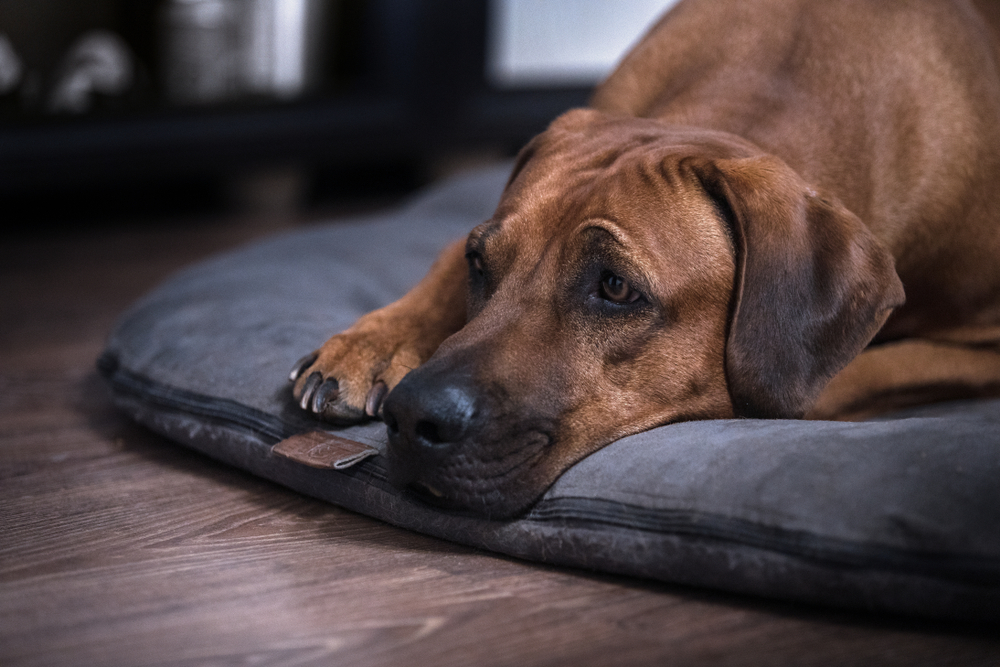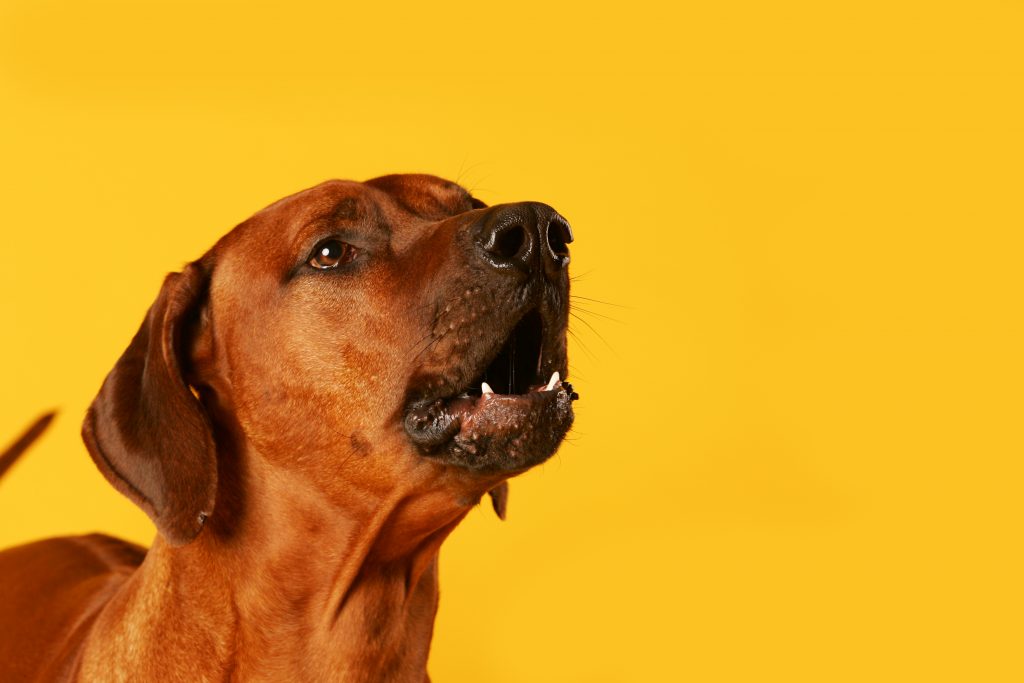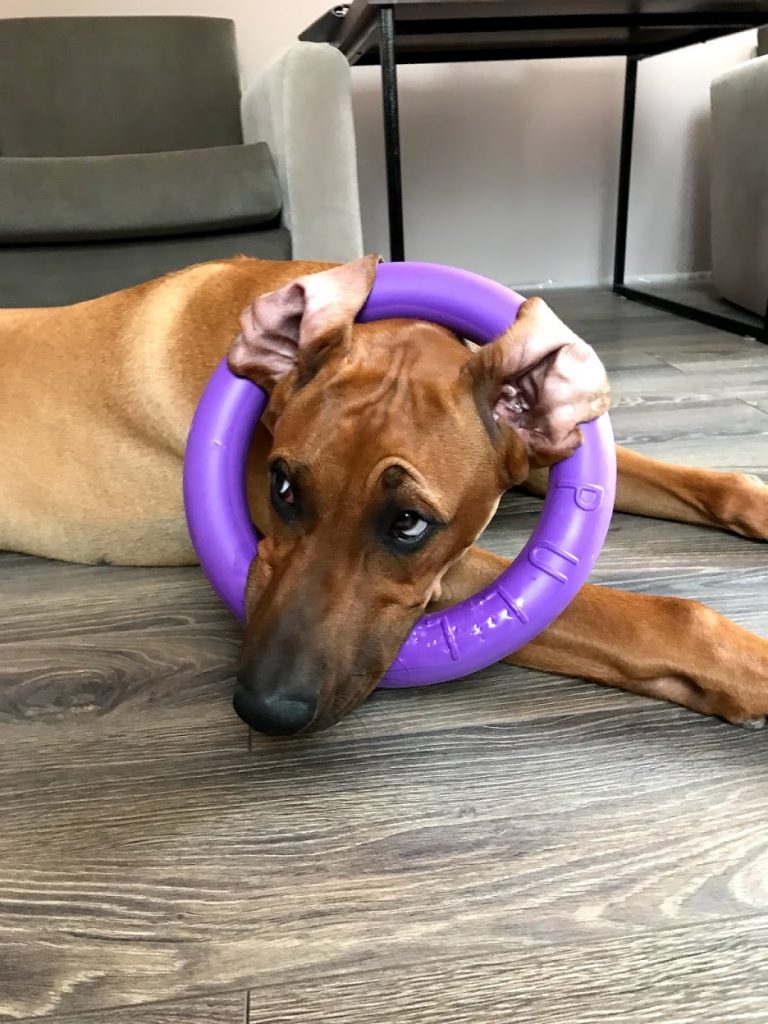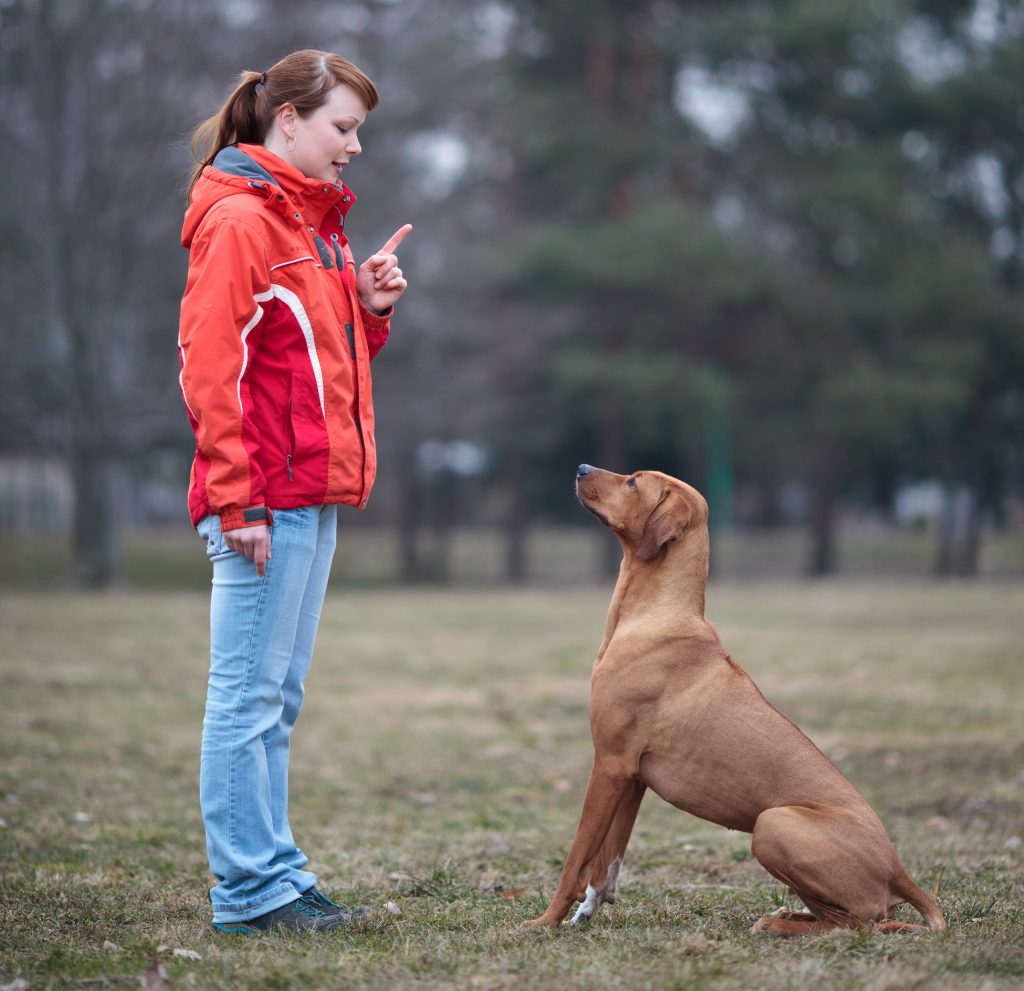Is It Okay to Leave a Rhodesian Ridgeback Alone?

In general, leaving a bored Rhodesian Ridgeback at home can be a recipe for disaster. This breed does not tolerate loneliness very well, and at best may pine in your absence, and at worst become destructive. This condition is known as separation anxiety.
In an ideal world, we would never have to leave our dogs alone. Rather, we would either take them everywhere with us or have someone at home to be with them. However, in this day and age with our busy lives, being with our dogs 24/7 is quite often not feasible. This means our beloved pooches have to be home alone at certain times whether we like it or not!
It is certain that many dogs and breeds do not like being left alone in the house with only themselves for company. Dogs are sociable, pack animals that do not see being alone as the norm. Rhodesian Ridgebacks are certainly one of these breeds, hating loneliness and boredom, but can Rhodesian Ridgebacks be left alone?

It’s difficult to give a definitive answer to this question since just like people all Rhodesian Ridgebacks have different temperaments and personality. However, in general, leaving a bored Rhodesian Ridgeback at home can be a recipe for disaster. This breed does not tolerate loneliness very well, and at best may pine in your absence, and at worst become destructive. This condition is known as separation anxiety.
The possibility that your Rhodesian Ridgeback may pine for you in your absence, however, should not put you off this breed. There are ways in which you can help your dog to cope better with separation anxiety. But first, however, you need to understand how to spot the signs, and why they feel the way they do.
What Is Separation Anxiety?
Separation anxiety is exactly what it says on the tin; the feeling of anxiety when being separated from loved ones and left alone. It manifests itself in the shape of unwanted behaviors such as barking, howling, destruction, and even toileting. It occurs because the dog in question has never learnt that being alone is normal at times, and an acceptable part of life.
Why Do Dogs Suffer From Separation Anxiety?
As already stated, dogs are incredibly sociable animals that from birth are surrounding by companionship from their mother and littermates. This makes it the norm for them to be surrounded by others and makes being alone difficult. Anyone that has experience with litters of puppies will know that if you remove a pup for any reason, they do not respond well. Whining, whimpering, and barking will ensue in order to regain some kind of contact.

How Common Is Separation Anxiety In Dogs?
Surveys suggest that between 13% and 18% of all dog owners think that their dog may be suffering from some level of separation anxiety. This may not, however, be a true picture. Some anxious dogs may well go unnoticed whilst others suffering may just be chalked up as being naughty.
What Are The Signs Of Separation Anxiety?
The signs that your Rhodesian Ridgeback may be suffering from separation anxiety will probably be evident before you have even left the house. Dogs, you see, are great at learning events which can reliably predict that they are going to be left alone. For example, by putting on work, not dog walking shoes, you are telling your dog that you are going out without them.
At this point, dogs with separation anxiety will start to think ‘oh no, my owner is going out without me’ and begin to react. They will follow you, pant heavily, seek attention, and maybe even lay across the doorway, blocking your route out of the home. Whilst these are not absolute indicators of separation anxiety, teamed with other behaviors they could well be.
On returning home the vast majority of dogs, including Rhodesian Ridgebacks, will be incredibly excited to see you. However, this also is not a sure fire sign that they have been anxious in your absence. Most dogs just genuinely adore their owners and are incredibly pleased to see them at any given time.
The best indications of separation anxiety will be apparent when you are either approaching your home after an absence or have entered. These include distinct howling and barking being heard before your dog is aware of your presence, and damage within the home. Destructive separation anxiety will often include chewing, toileting, scratching at doors, walls, and furniture, and maybe even hurting themselves.
Clearly, Rhodesian Ridgeback owners will be aware of destructive behaviors within the home as they would, let’s be honest, be pretty difficult to miss. Some dogs, however, with separation anxiety do not behave in a destructive manner, rather they choose to be vocal. Speaking to your neighbors will help you find out if this is the case with your particular dog; that is if they have not already complained regarding the noise.

How Do You Help Dogs With Separation Anxiety?
There are many ways in which you can address and help a Rhodesian Ridgeback, or any other breed for that matter, with separation anxiety. The following are ten helpful and handy tips to aid you in doing this.
1 Alter your ‘I’m going out’ signals.
The goal of breaking your going out signals is to try to halt the triggering of separation anxiety in your dog. They know that certain actions performed in a certain order mean that you are going out, and this leads them to panic.
Instead, try mixing things up like putting your coat on fifteen minutes before you leave. Leave your keys, purse, and shoes in different spots and pick them up, put them on in random orders. You could also try leaving the house via different doors where possible.
Giving your dog a treat or toy as you leave the house can also be helpful as it creates a positive association with you leaving the house. Be aware that if any treat given when leaving the house is uneaten on your return that your dog is still suffering from separation anxiety in your absence.
2 Downplay goodbye and hello!
It’s very easy to make a huge deal of leaving the house and saying goodbye to your dog. Cuddles, words of reassurance, more hugs, more words, and finally you leave. However, this really is not good for your dog or for you.
By paying so much attention to your leaving the house you are only reinforcing your dog’s fear of your absence. You are playing straight into the hands of their anxiety. Rather, you should calmly say goodbye and then just simply leave; in essence, play your imminent absence down.
On returning to the house you should follow the same principles. Re-enter quietly and simply say hello without getting too affectionate until your dog has calmed down. This part can be difficult as it is hard not to become over enthused with your dog’s absolute delight to see you. However, you should try your best not to show too much your delight at being reunited with them as well.
3 Give your dog some exercise before you leave.
It stands to reason that a well-exercised dog is a tired dog, and therefore a calm one that is more likely to rest and not become anxious during your absence. Thirty minutes brisk exercise should be enough to have your dog relaxed and divert their attention to sleep and rest rather than anxiety.

4 Train your Rhodesian Ridgeback that it’s OK to be alone!
Get your dog to stay in a room by themselves whilst you go to a different part of the house. For dogs with severe anxiety, this should only be for a period of 10 to 15 seconds at first, working up to 20 to 30 minutes over several weeks.
5 Create some space just for your dog.
Invest in a dog bed and instead of allowing your dog to always cuddle up on the sofa with you or climb in your bed, get them to use their own bed. This will teach them to enjoy and be used to having their very own personal space and to be slightly independent of you. Directing them to their own bed when you leave should then help relieve their anxiety at being alone.
6 Leave them with some background noise and comfort items.
Background noise such as the radio or TV can often help a dog feel like they are not quite alone. Research has also shown that dogs find the sound from them soothing, relaxing and that it can help them fall asleep.
For comfort items, try leaving your dog something with your scent on such as dirty laundry or a blanket you may have used. Dogs have been shown to find the scent of their owners comforting and good reassurance that they will return.
7 Never leave your dog alone for too long.
The truth is this tip applies whether your Rhodesian Ridgeback suffers from separation anxiety or not. Dogs are not animals suited to long periods of being alone and doing so really is cruel.
Any dog should not be left for periods longer than 6 to 8 hours. If you are going to be absent for longer than this consider getting a dog sitter, friend, relative, or taking your pooch to doggy daycare.
8 Look into using calming medications.
Medicating your dog long term is probably not a solution that you really want to be considering. However, in the short term whilst you find other non-medical solutions it can be helpful. You should always contact your vet and discuss this option with them before using any calming medication.
9 Shop for anxiety treatment supplies.
There are quite a few products available that could help with your dog’s separation anxiety. For example, swaddling blankets have been found to be quite effective for many who get reassurance from the constant gentle pressure. You could also try long-lasting toys that will entertain your dog for longer periods. Toys that release treats at intervals during play are often effective at keeping your dogs attention.
10 Invest in a doggy webcam.
It may sound strange to advise a webcam for you to watch what your dog is doing to treat your dog’s anxiety. However, many of the dog specific webcams available today allow you to interact vocally with your dog and even to dispense them treats. You should be careful, however, as though hearing your voice may soothe some dogs with separation anxiety, it may not for others. Hearing your voice but not being able to see you could stress your dog out more.
It is also worth mentioning that dog webcams are really, really good for examining if your dog has separation anxiety in the first place. They are a perfect way to examine and diagnose how your dog behaves when you are not around.




















